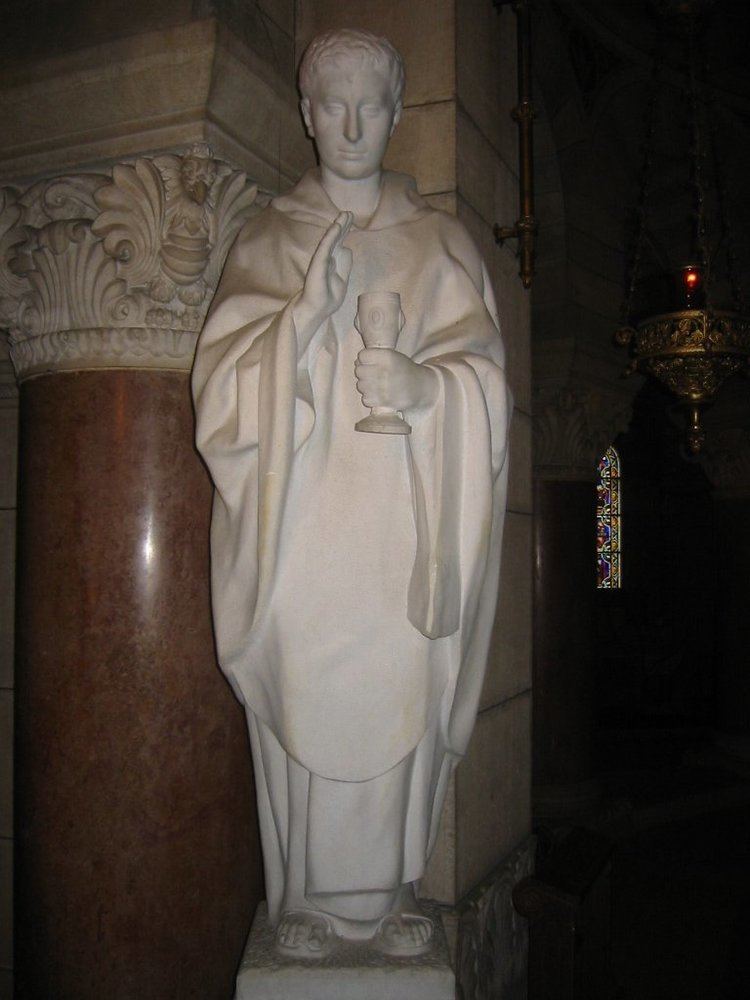Died ~AD 212 Feast June 16 | Patronage Besancon Name Ferreolus Ferrutio | |
 | ||
Major shrine Basilica of Saint-Ferjeux | ||
Saints Ferreolus and Ferrutio (French: Ferréol and Ferjeux; Italian: Ferreolo e Ferruccio) (died ca. AD 212) are venerated as martyrs and saints by the Catholic Church.
Contents
History
Their legendary acts state that they were brothers converted to Christianity by Saint Polycarp. They were ordained as priest and deacon, respectively, by Saint Irenaeus of Lyons. They were sent to the area around Besançon as missionaries. They are called natives of Asia Minor; Alban Butler held it "more probable that they were natives of Gaul who had studied in Asia Minor and come under Christian influence."
After working as missionaries amongst the Sequani for 30 years, in AD 212 during the persecution of Alexander Severus, they were arrested, tortured and beheaded.
Veneration
According to their legend, their relics were discovered in a cave near Besançon in AD 370 by a military tribune whose dog was chasing a fox. The relics were enshrined by Bishop Anianus of Besançon in the 4th century AD. Saint Gregory of Tours writes that miracles were attributed to their relics in his time; he says that his brother-in-law was cured of a dangerous distemper at the saints' intercession. The Missale Gothicum (ca. AD 700) contains a full proper of the Mass in their honor. In the sixteenth century, they were invoked in Besançon against sickness, along with Saint Sebastian and Saint Roch.
Ferreolus appears in a catalogue of the 17th century as a bishop of Besançon, but the liturgy of Besançon has always remembered Ferreolus as a priest, and Ferrutio as a deacon. Ferreolus and Ferrutio, as patrons of Besançon, are considered to have appeared on the city walls in times of danger. The two saints have been represented in stained glass, paintings, and statues in many churches and chapels in the two dioceses of the Franche-Comté: Saint-Claude and Besançon.
The Basilique Saint-Ferjeux is situated in the neighborhood of Saint-Ferjeux, Besançon.
They are depicted on a French lantern slide dating from AD 1900.
